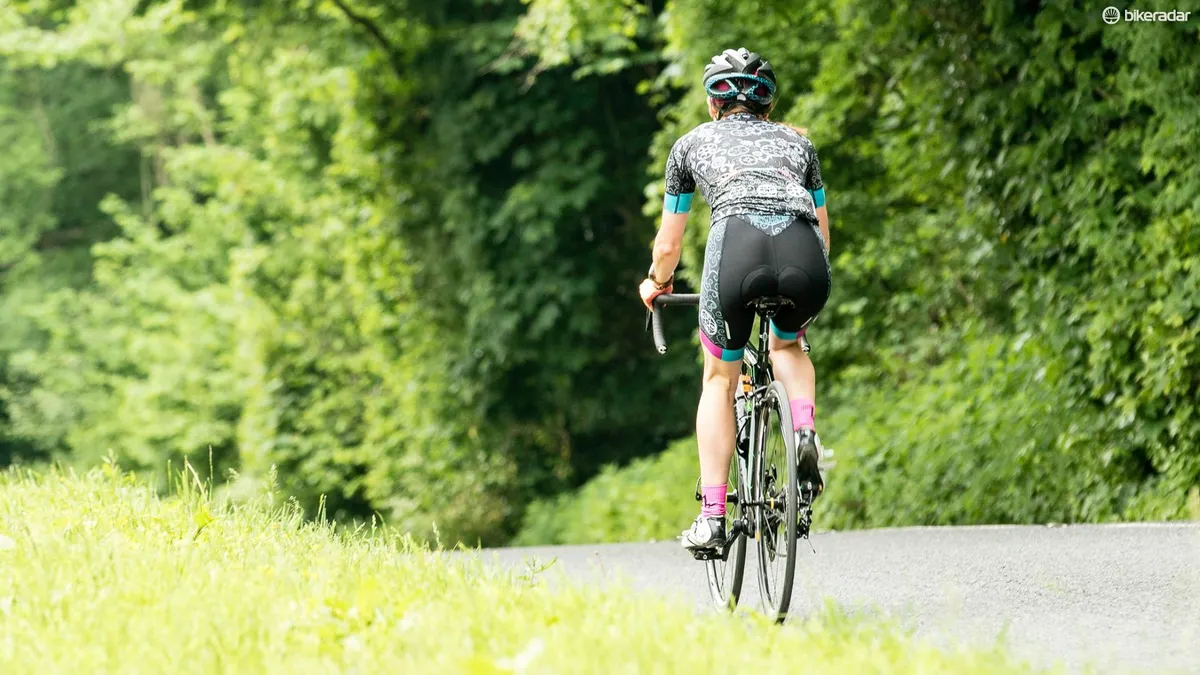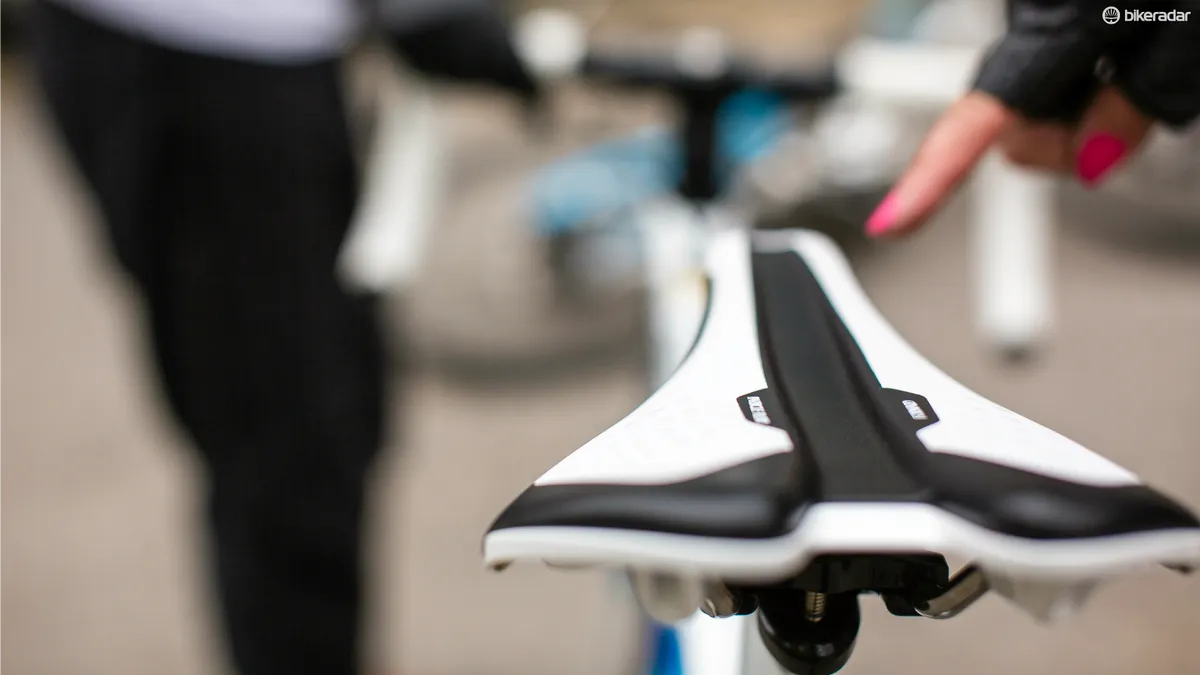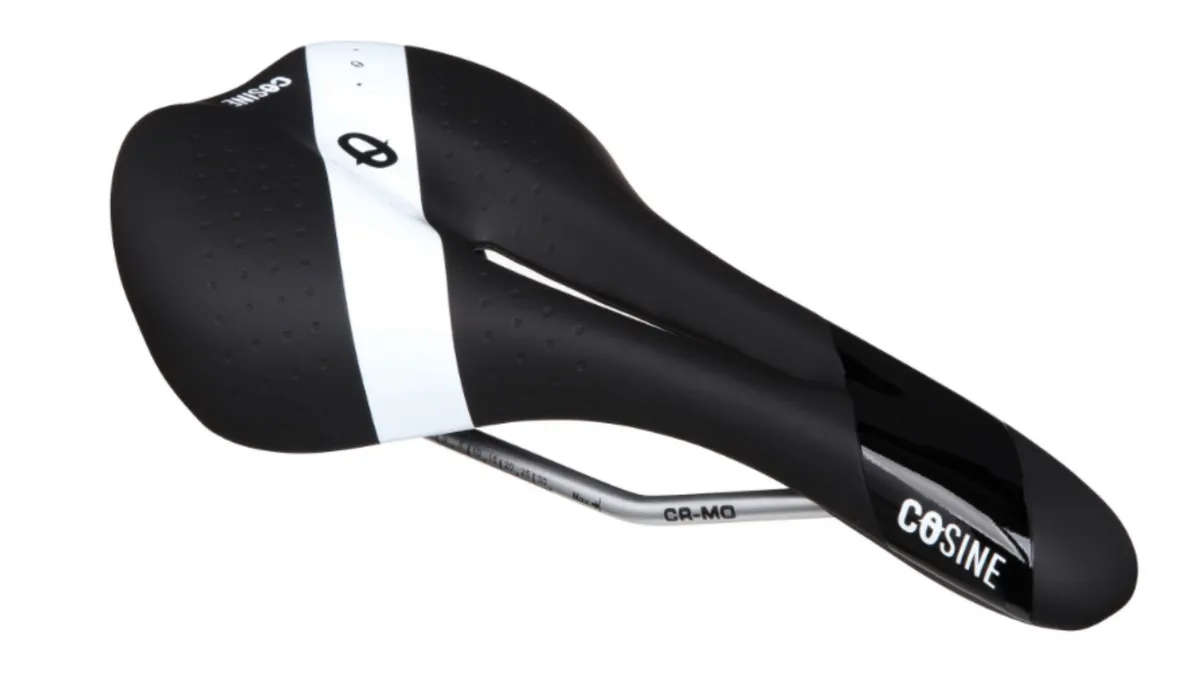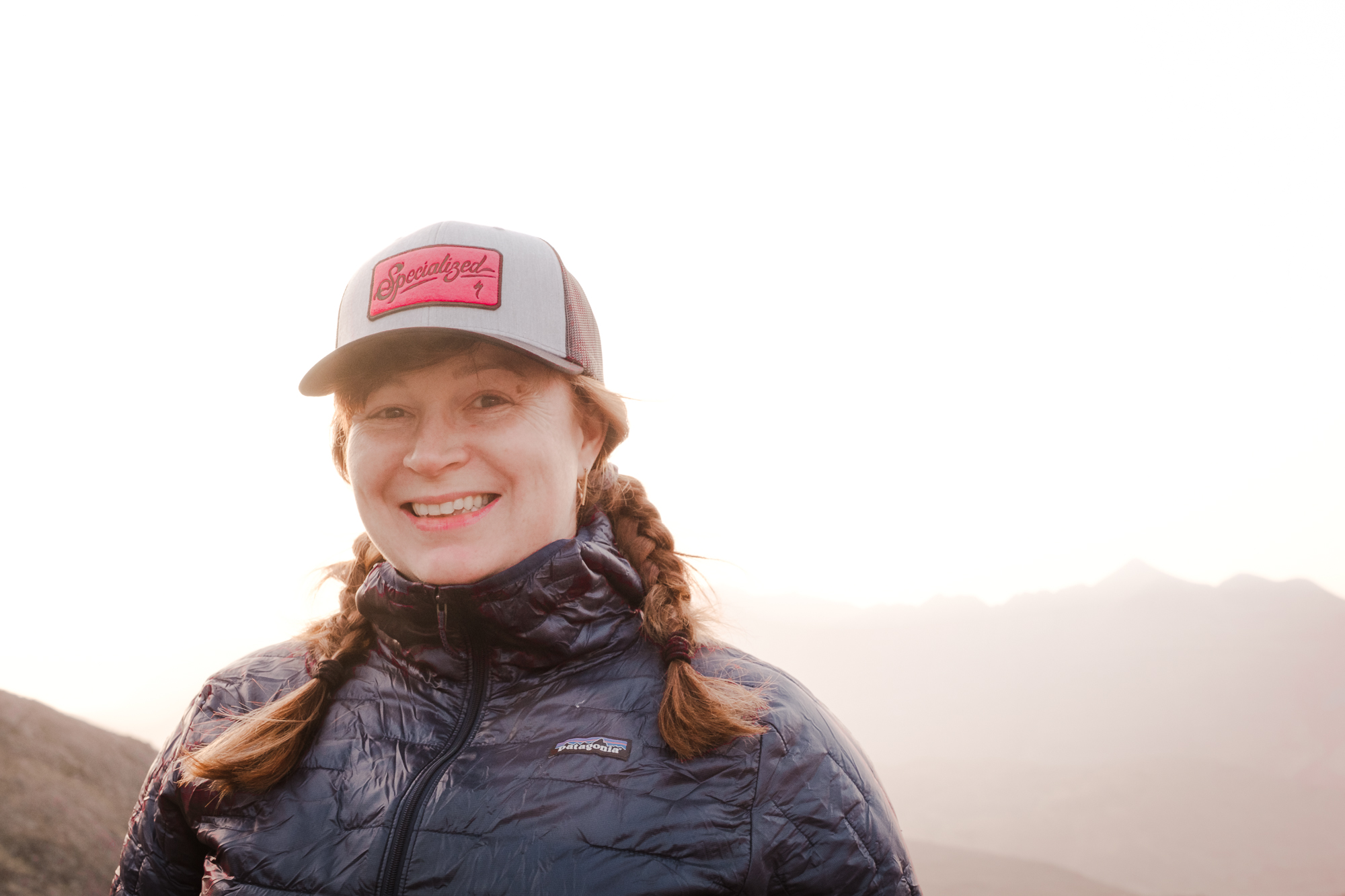A good saddle that fits you and is comfortable is a hugely important element to the bike comfort equation. The wrong saddle is a special type of torture that can cause pain and discomfort. The right saddle, however, is the one you barely notice when you're riding because it's doing its job properly. For many women, a women's specific saddle is the answer and there are women's saddles available for road cycling, mountain biking, leisure riding and everything in between.
Women's saddles are generally a different shape to men's to take into account the physiological differences between men and women; hip width and different genitalia are of course two of the major considerations. Saddles designed for women take into account these anatomical elements and products are developed around how these differences affect comfort and performance when riding in a variety of disciplines.
Although many women do find women's saddles work extremely well for them, saddle choice is still a very personal matter. What works for one person may not necessarily work for another. Some women find that unisex or men's saddles suit them fine, others find that lots of saddles suit them while others still find that there are only one or two saddles that work for them.
We can provide advice and guidance, but unfortunately the process of finding the right saddle for you is one of trial and error. That said, there are more and more brands and shops that either offer demo saddles for you to take away and try or offer exchanges if it turns out the saddle you bought isn't right for you.
There's still some trial and error even when you have the chance to test a saddle – getting used to a new perch can take a good few rides and plenty of miles.
If you're just getting started you will experience a bit of discomfort until your derrière adapts, but if the discomfort persists beyond a few regular rides there may be something going on.
- How to fix 5 of the most common causes of bike pain
- How to choose a bike saddle
- How to avoid and treat saddle sores
How to choose the right saddle
There are hundreds of saddles on the market to choose from and getting the right one can mean the difference between pleasure and pain. Here's how to go about choosing the right saddle for your needs.
1. What type of cycling are you doing?
You can get saddles designed for all disciplines of cycling, from leisure riding to commuting through to road cycling, time trialling and mountain biking.
Saddles designed for a specific type of cycling are generally developed to provide support and comfort when in the position on the bike that's usual for that type of riding. So for example, road cyclists will tend to lean forwards over the bars, which applies more pressure towards the front of the crotch.
2. What's your budget?
You can spend a little or an awful lot on a saddle, depending on what you plan to use it for and how often you'll be riding. If you're riding a lot, commuting regularly or racing, it can be worth spending a bit more to get something lightweight and designed for purpose. In general, the higher the price, the lighter and more performance-oriented the saddle.
3. What size do you need?
While not all saddles have different size options, many do, and it's determined by the width of your sit bones (which, by the way, has absolutely nothing to do with the width of your bum).
Most shops will have a simple device for measuring this, which usually involves a gel or foam pad that you sit on. The two main depressions or dots left when you sit up will indicate where your sit bones are and your saddle measurement will come from this.
4. Can you test it?
With saddles some things you can feel straight away and others you'll need a few hours in the saddle, to work out whether it's working for you or not.
You shouldn't feel any pressure on your soft tissue and you also shouldn't feel any part of the saddle digging in or rubbing anywhere on your bum or at the tops of your legs when pedalling. Anything that feels like a little niggle now will feel like hell on two wheels after about an hour of riding, so if it's not right when you demo the saddle then it's probably not right for you full stop.
Taking a saddle for a test ride, ideally for an hour or two, will help you decide if you've met your perfect match or not.
What to look for in a women’s saddle
The most obvious differences between men's and women’s saddles are their shape and the placement of the padding. Some saddles are unisex, and you may find these work better for you than women-specific saddles, but we also know riders who swear by the comfort of some men's saddles.
Buying a saddle really is the most personal component choice you'll make.
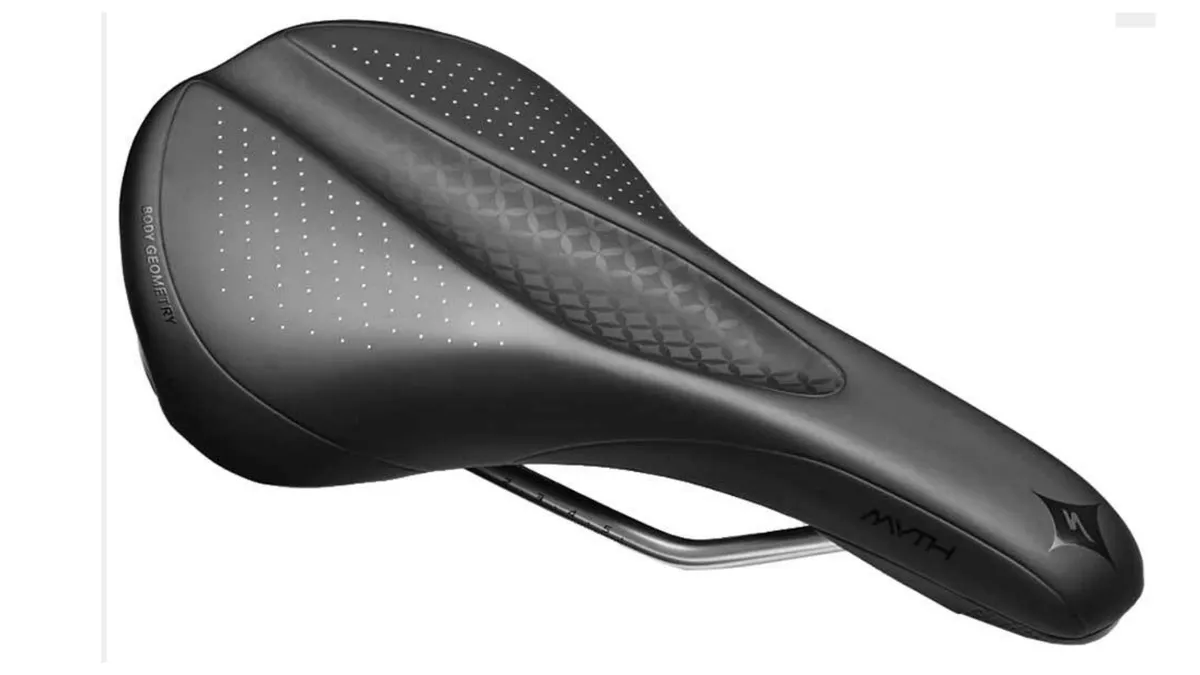
Saddle needs will vary from rider to rider too. If you tend to do shorter, faster road rides then you’ll be sitting for less time than if you’re a mountain biker who enjoys all-day backcountry epics, and in the case of the former, you might want to sacrifice a bit of padding in the interest of low weight.
Anatomy of a women's bike saddle
1. Cover
The cover is the outer layer of the saddle, and the bit your bum will be in contact with. The materials these are constructed from can vary from real leather on pricier saddles to synthetic leather and various other materials. One key thing to make sure is that any seams, sticky bits or reinforcing panels don't chafe or feel noticeable when you are riding. For road cycling and mountain biking, where repositioning on the saddle can happen when moving position on the bike, a smooth material that isn't going to catch or rub the material of your bike shorts is important.
Mountain bike saddles are also likely to suffer crashes and get muddy, so a hard-wearing and easy to clean cover is a must.
2. Shell
The shell is the hard base of the saddle and this is the part that controls the basic shape of the saddles, and also to some extent how springy it is. Most basic saddles will have a plastic or polymer base.
More expensive saddles for road and mountain biking may have a partial or full carbon shell. This provides a strong but lightweight base and also has a degree of vibration-absorption to help stop 'road buzz' and other vibrations translating into your bum, lower back and body.
The shell will determine the size of the saddle and many manufacturers will make different saddle sizes and widths to suit different riders.
3. Grooves or cutouts
Many saddles for both genders will have a central groove, channel or cut out section running along the middle of the saddle. This is designed to relieve pressure on the soft tissue of the crotch and genitalia.
For women's saddles the size, width and position of the groove is designed to suit female anatomy, and works with the surrounding padding to ensure that the weight-bearing parts of the bottom are supported — and that the areas where there should be little or no pressure are left as pressure-free as possible.
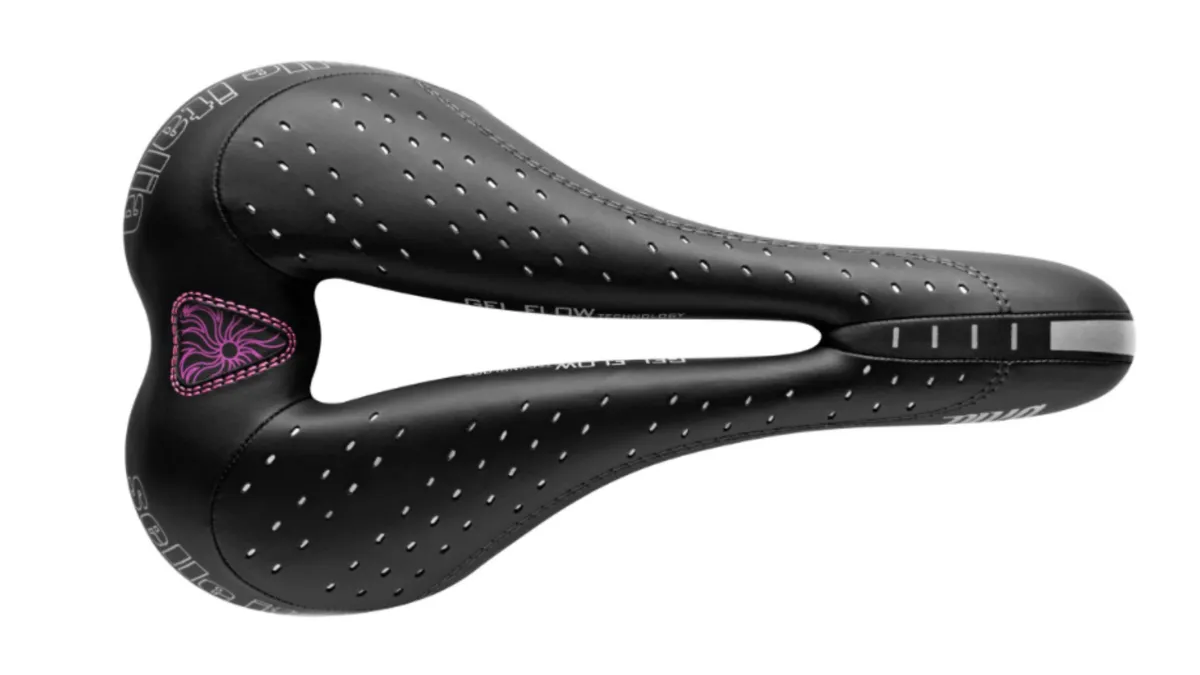
4. Padding
Padding distributes pressure from your behind across the surface of the saddle with the aim of creating as even a distribution as possible, this will ensure you don't experience pressure hot-spots. Saddle manufacturers often use pressure mapping to determine where and how much padding to place on a saddle, as well as using it for overall saddle design.The way pressure is distributed on a saddle will vary depending on what position the rider is in. An upright rider on a city or Dutch-style bike may have the majority of their weight directly over their sit bones, whereas a road cyclist riding on the drops will have their hips rotated forward and their weight distributed in a different way. This also affects where grooves and cut-outs are positioned.
The padding in women’s saddles will usually be placed slightly differently to men’s saddles, and will use a range of different thicknesses and materials too.
Don't automatically assume that more padding equals more comfort. For longer rides, bulky saddles can end up chaffing the tops of the thighs and for the majority of road cycling and mountain biking a well fitted saddle with a little padding is far better than a saddle with lots of padding.
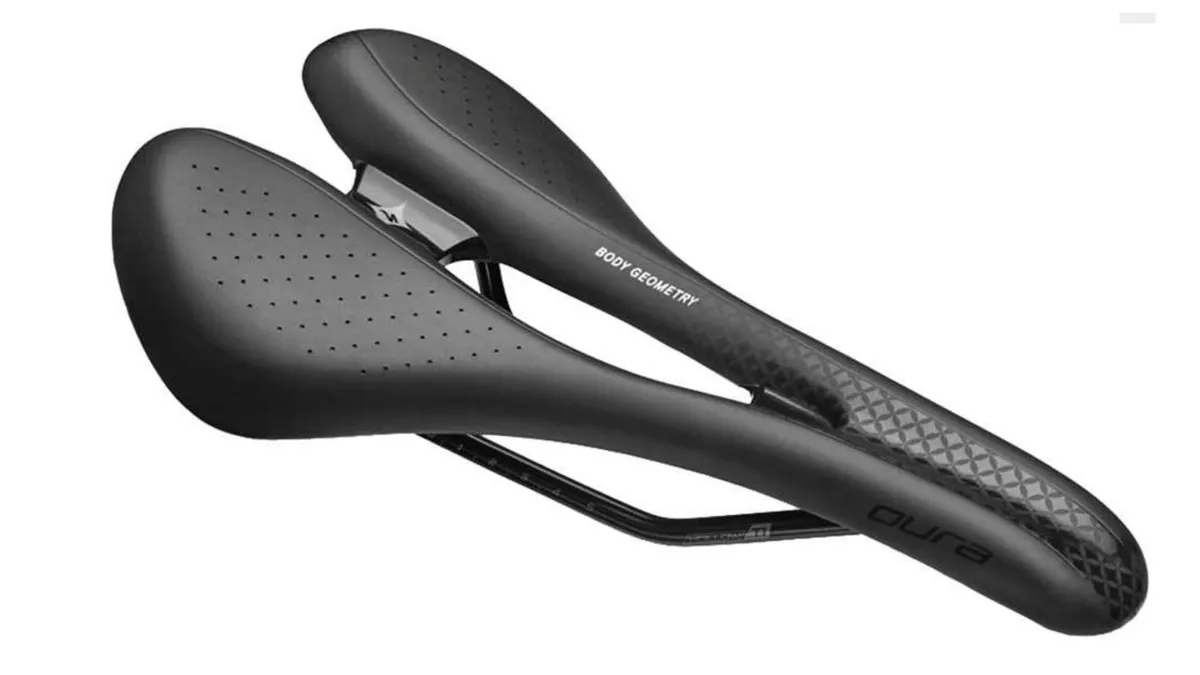
5. Rails
The rails are the bars that the seatpost clamps onto under the saddle. Cheaper saddles use steel alloys, while titanium or carbon rails are significantly lighter when weight is a factor, if you're racing for example.
Single rail saddle and post systems are gaining ground in road cycling for their lightweight and adjustability, but double check compatibility before buying.
6. Extra details
You'll find all sorts of other touches on saddles from Kevlar-reinforced corners or plastic bumpers to built-in mounts for tail lights or saddle packs. These can offer extra features, but always keep comfort as your number one priority.
